The first threading that I did was in 1991 due to a request to make a bench vice screw and nut in 2 1/2 - 2. The method I developed involved a router mounted to a carriage on on the lathe ways, connected to the head stock spindle via a 4 pitch acme screw and a 2 to 1 sprocket connection. The next method was to build an off lathe machine with change gears (timing belt and timing pulleys) for multiple pitches between the spindle and lead screw, the I took with me to the 1993 symposium in Provo Utah. The third and current method is a vintage LeBlond engine lathe with a 1 1/4 - 8 adapter and a trim router mounted to the cross slide. The photos illustrate cutting threads on the lid for an urn similar to my avatar. I do not use inserts of different woods but rather if necessary will harden the wood with CA.
photo 1 - On the wood lathe prepped for the male thread on the lid.
photo 2 - cutting threads on the Leblond.
photo 3 - Using threaded lid to finish the base of the urn.
photo 4 - Holding the lid on a female threaded block similar to a jam chuck to do further work on the lid.
photo 5 - Starting the lid finial.
photo 6 - finished Urn and lid.
photo 7 - small mesquite keepsake urn.
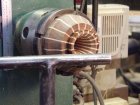
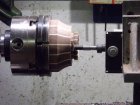
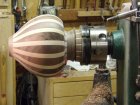
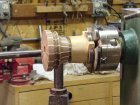
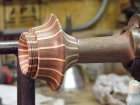
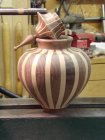

photo 1 - On the wood lathe prepped for the male thread on the lid.
photo 2 - cutting threads on the Leblond.
photo 3 - Using threaded lid to finish the base of the urn.
photo 4 - Holding the lid on a female threaded block similar to a jam chuck to do further work on the lid.
photo 5 - Starting the lid finial.
photo 6 - finished Urn and lid.
photo 7 - small mesquite keepsake urn.







Last edited:





